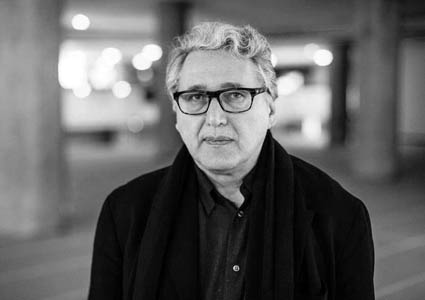
主题:与“素人风格”相关
学术主持:王兴伟
“素人”从字面上解释就是普通人、门外汉、偶尔客串的爱好者。“素人风格”在这里指称为追求生涩、稚拙、朴素、原始生命力的一种创作风格。他们好像从没有受到过专业化的训练和规范一样。他们每个人的方向各不相同,分别带有新手感、无意识、反学院倾向、民间趣味、童稚趣味、低级趣味、坏画等,以或粗糙、或反智、或破坏的手法,越是以自己的作品否定中西方艺术史,否定流行和成功艺术家,与这些创作风格拉开距离,越是在当代艺术的绘画领域里显得格外另类,不可兼容。
易英说,“在荒原的那一头是真正的自我。”敢素面朝画的人多半是有横溢的天赋,特异的秉质,或者独享的审美,曾经有过的感觉范式和绘画程式已经被最大限度地挤压干净了。实际他们都是“伪素人绘画”,只有郭凤怡才是天然和原生态的。虽然“生”和“涩”也一直是中国传统绘画品评美学中的范畴,但是素人绘画还有更多的层面,它在对绘画语言的颠覆性的解体的同时,同时也为全然破坏性内容的表达敞开了大门。他们不但抗拒建构,更抗拒理性;他们以无意识和潜意识抗拒现实和责任;以想象和游离抗拒消费主义体制。由于不受外界和历史的影响,使他们对改变艺术史及艺术界无能为力,同样一切支配和依赖对他们来说也毫无意义,他们获得了完全的自主的自由。他们不是天才,就是疯子,素人风格几乎不可论证!本期我们邀请了不断颠覆绘画的艺术家王兴伟作为学术主持,出于他对绘画“手感”和“人缘”的强调,对于难以界定的素人风格绘画判断一定不会跑偏。本期主题第一次将此种风格的作品集合到一起,希望开启一个可以深入讨论的开端。
——编者的话(付晓东)
这期推介的艺术家中只有郭凤怡属于一般所说的“素人艺术家”,其他只是与“素人风格”相关,而且相关的角度和相关的方式都差别很大,“素人风格”只是他们作品中多个方面中的一个因素。他们的作品在方向上各不相同,但也有某些方面的相似特性:对主流文化改造保持距离的意识,野生的、原始的、非标准化的、很自我的、固执的、有别扭劲的,北方话里形容这类人的特征有个词叫——“葛”。
下面描述一下我对这些艺术家作品的简略印象:
郭凤怡很可能某一天“神儿”附体了,就一下成了画家,或者叫“画师”,是介于老太太针线活和巫术之间的“疑似艺术”。形象不是先想好的,而是随着一笔一划的顺势展开中逐渐自动构成的,她是置身事中的,而最后的形象往往都有一种民间神像的感觉。
李山老师的艺术经历了一个长长的道路,但不论哪个阶段,他都保持了手法的自由性和想法的先进性,甚至是一种“时尚性”。轻松乱画和功力深厚混成一体,异想天开和老奸巨滑混成一体。
欧阳春念过学院,但他的画里的形象就像五岁前儿童的简笔画涂鸦,浓重的颜色和武断的用笔带着儿童式的残忍和对“油画感”的准确把握。
王兴杰在二十多岁的某一天忽然支起画架,对镜子画了一张油画自画像,使我和画画的朋友都很惊讶!那种生涩和真实的感觉。而他是不满足于做一个“素人画家”的,他愿意走一个更艰难漫长的路:围绕真实感觉来建立有力的画面。这是相当有“专业精神”的。
廖国核思维逻辑非同一般,他是语言的天才,在他那里没有老生常谈。
知道烟囱是从一个有意思的松散团体——绿校,他把画画还原成为一种没有专业门槛的自然行为,一种较少功利性的私人表达。这使作品里的人情味更浓,交流起来更平等亲切。
王俊作品是一种童话式的寓言气氛,像梦,奇迹的能量在睁大的瞳孔中繁殖。
蒋之龙作品中孤零零的小人儿被(或自愿)处在一个空阔的空间,时而低落时而莫名兴奋。
Theme: Relative to the Naive Art Style
Academic Host: WANG Xingwei
Literally speaking, a “naive person” is an amateur, a layman, an enthusiast who from time to time joins the creation. The “naive art style” here refers to an art style of creation that is in pursuit of the raw, simple and primitive vitality, as if they had never received any professional training and regulation. They vary greatly in directions – the new touch, unconsciousness, anti-academic tendency, folk flavor, childish delight, vulgar taste and bad painting, with the approaches of coarseness, anti-intellectualism or vandalism. The more they deny the Western and Chinese art histories and the successful and popular artists, the further away they strive to set apart from these styles, the more offbeat and incompatible they stand out in the painting field of contemporary art.
YI Ying once said, “at the far end of the waste land stands my true self.” Those who have the nerves to create naive paintings are mostly those born with great gifts and qualities, or with a unique eye for the beauty, for the past paradigm of sensation and formulas of painting have been squeezed to the utmost. Actually they are “pseudo-naive painting”, for only GUO Fengyi falls in the category of natural and original. Though “green” and “obscure” have always been the appraisal criteria of traditional Chinese painting, the naive painting consists of more layers, subversively deconstructing the language of painting while opening the gate for the expression of the total destructive contents. They resist not only the construction, but also the rationality; they pit unconsciousness and sub consciousness against reality and responsibility; imagination and dissociation against the system of consumerism. Unaffected by the outer world and history, they are incapable of changing the art history and art world, on the other hand, all the domination and dependence mean nothing to them, thus they obtain utterly independent freedom. They are either genius or nuts. The naive art style is almost inarguable! We have invited WANG Xingwei, who repeatedly subvert the painting, to be our academic host for this issue, for his emphasis on the “touch” and “popularity” of the emphasis guarantees his sound judgment on the paintings of naive art style, which are hard to define. The subject of this issue put together works of this style for the first time, in hope of initiating a discussion that will go further and deeper.
(Words by the Editor/FU Xiaodong)
Among those artists introduced this time, only Guo Fengyi belongs to the so-called “naive artist”, while all the others simply have something to do with the “naive art style”, which, to be more specific, stands for one aspect of their works. Besides, these works of art vary considerably both in their perspectives and means as far as the relevance to the naive art style is concerned. Though different in directions, they share something in common, such as the consciousness of keeping a certain distance from changing the mainstream culture. Such kind of people, who are wild, primitive, non-standard, self-centered, or stubborn in their nature, could be described by a word from the northern mandarin—“ge”.
I’d like to give my short impression of these artistic works as follows.
Guo Fengyi probably had a sudden enlightenment one day and became a painter at once, or to be specific, a folk painter, who created something like art, something similar to the old ladies’ needlework or witchcraft. The images are not designed in advance, but flow naturally as the brush sweeps here and there into completion. By placing herself into the creation, she delivered a special feeling of folk idols from the final images.
Mr. Li Shan’s works of art have gone through a long way. No matter in which phases, he maintains to paint with freedom and think with advancement, or even fashion. Wielding his writing brush with ease and masterly ability blend together in his paintings; and the viewers could also perceive from his works the whim as well as the shrewdness.
Though he has received education in the academy of fine arts, Ouyang Chun creates the images in his paintings like a little child no more than five years old, who doodles his stick drawings. From the mixture of strong colors and arbitrary styles of drawing, the cruelty of a child and the precise comprehension of “the sense of painting” are revealed.
One day in his twenties, Wang Xingjie suddenly propped an easel and painted a self-portrait by looking at his reflection in the mirror, which amazed me as well as my other friends who paint. That kind of feeling is so unripe and real. However, not satisfied to be an naive painter, he is willing to go on, though the road ahead might be much tougher and longer—constructing the paintings full of power according to his real feelings. He had “professional spirit” indeed.
Liao Guohe possesses extraordinary logical ability. He is a language genius. There is no platitude in his works.
I hear of Yan Cong from an interesting loose group—Green School. He restores painting to be a natural behavior without professional restrictions, and a private expression with less unitarianism. His works seem to be more human, thus it is easier for equal and friendly communications.
Wang Jun’s works create a certain kind of fable atmosphere like fairytales. The power of miracle grows prosperously in the images’ wide-open eyes.
In Jiang Zhilong’s paintings, the lonely little images are confined (or willing to be confined) to the open space, sometimes depressed and sometimes displaying nameless excitement.(By Wang Xingwei)

